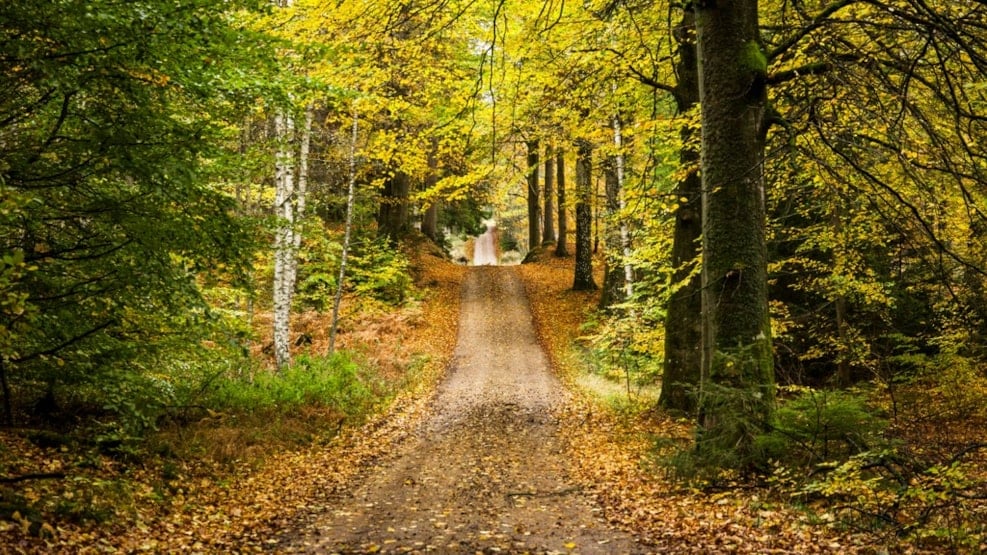
Gribskov | One of Denmark's largest forests
Gribskov is a natural gem with roots in Denmark’s ancient past. Discover stories of royal hunts, monastic ownership, and a living forest heritage in modern woodland management.
From Wilderness to Royal Forest
Gribskov spans about 5,500 hectares, making it one of Denmark’s largest continuous forests. In ancient times, all of North Zealand was covered in woodland, and Gribskov is one of the last remnants of this vast wild area.
The name “Gribskov” was first recorded in King Valdemar’s Cadastre in 1231 as “Gripscogh”. It likely derives from “grib,” referring to land without an owner – a shared forest used by all.
A Historic Hunting Ground
The King’s Game Reserve
After the Reformation, the entire forest came under the Crown. The Danish kings used it for hunting, and in the 17th century, King Christian V created a network of hunting roads for dramatic “par force” hunting. This landscape became a UNESCO World Heritage Site in 2015.
Horses by Esrum Lake
Along Esrum Lake were six fenced grazing areas, or "vange," used by the royal Frederiksborg Stud. Horses grazed in groups, each in its field, watched over by herdsmen. Today, forester houses stand where their homes once were.
Forest Use – Then and Now
Earlier Days
For centuries, the Crown used Gribskov primarily for leisure rather than timber. Peasants grazed their pigs and cattle in the forest and paid a tithe in return. Around the 1780s, long-term forestry planning began, introducing large-scale planting of beech, oak, and spruce.
Modern Forestry and Natural Regrowth
Today, spruce plantations are being replaced with native broadleaf species, especially oak. Natural forests with self-seeded trees are being preserved. Some areas are left untouched, others are managed using traditional methods such as grazing or selective cutting.
A Glimpse into the Wild
Gribskov is rich in wildlife. You can follow the life of an osprey nest through a live webcam, offering a rare insight into the world of birds of prey. The forest invites visitors year-round with its mix of peace, history, and nature.